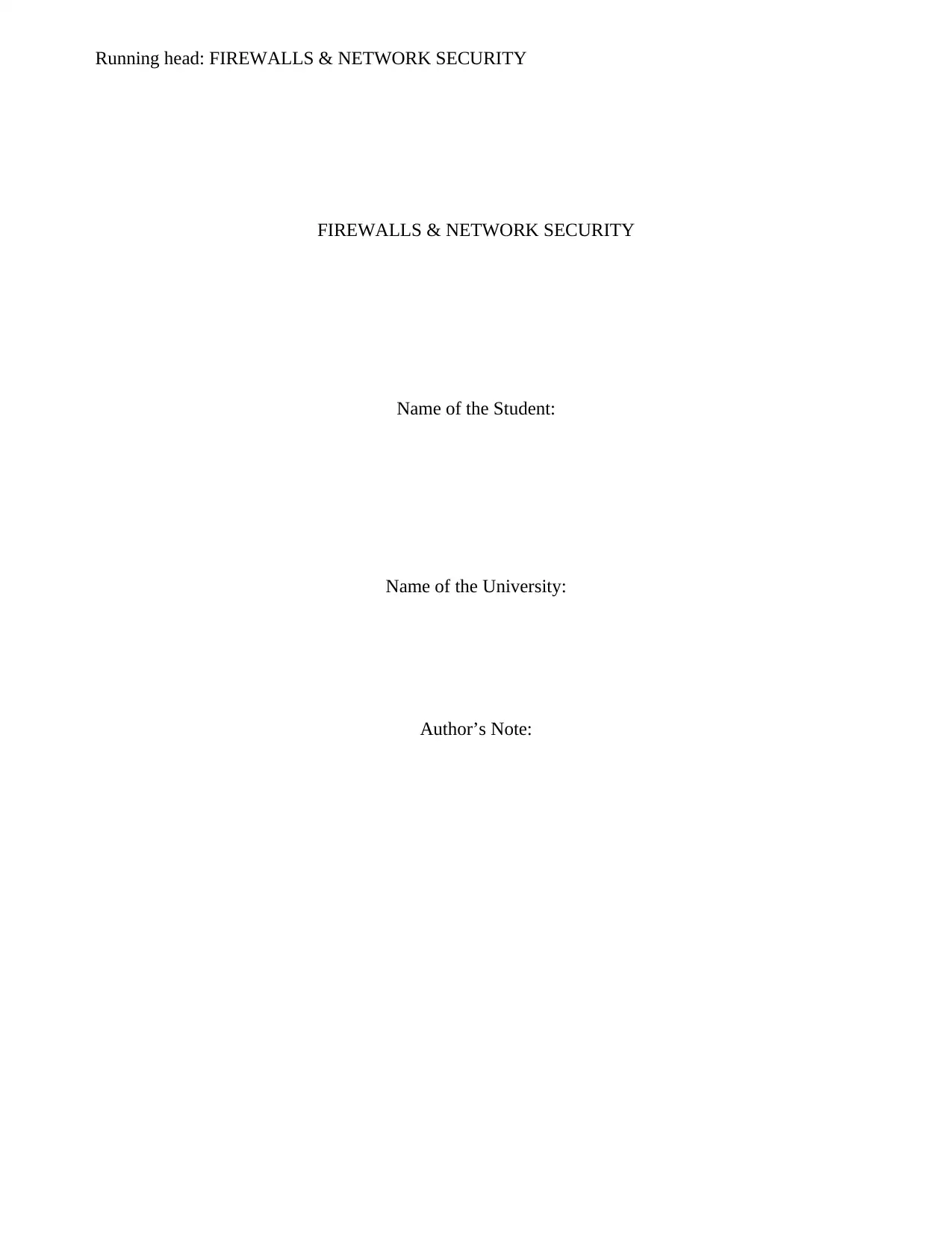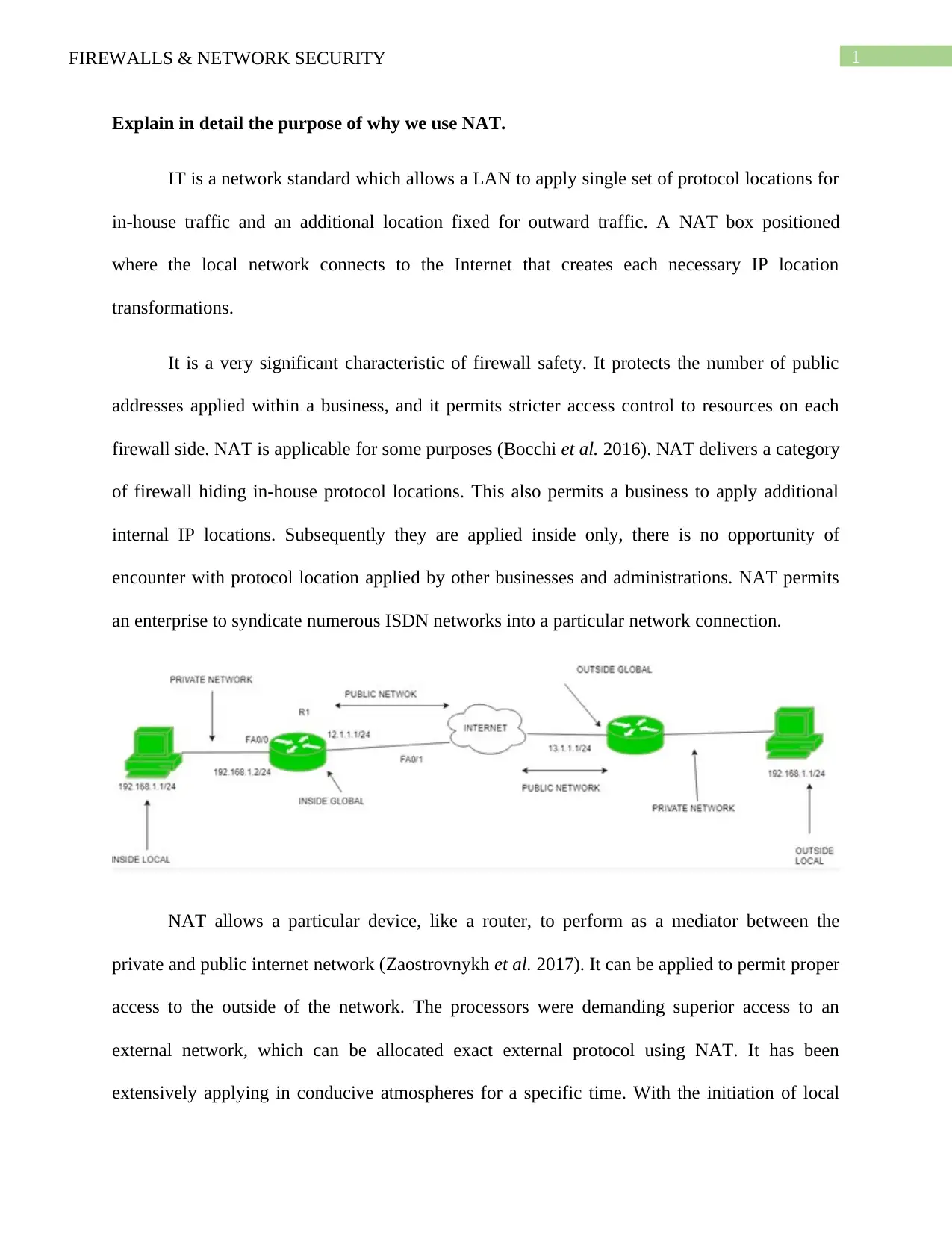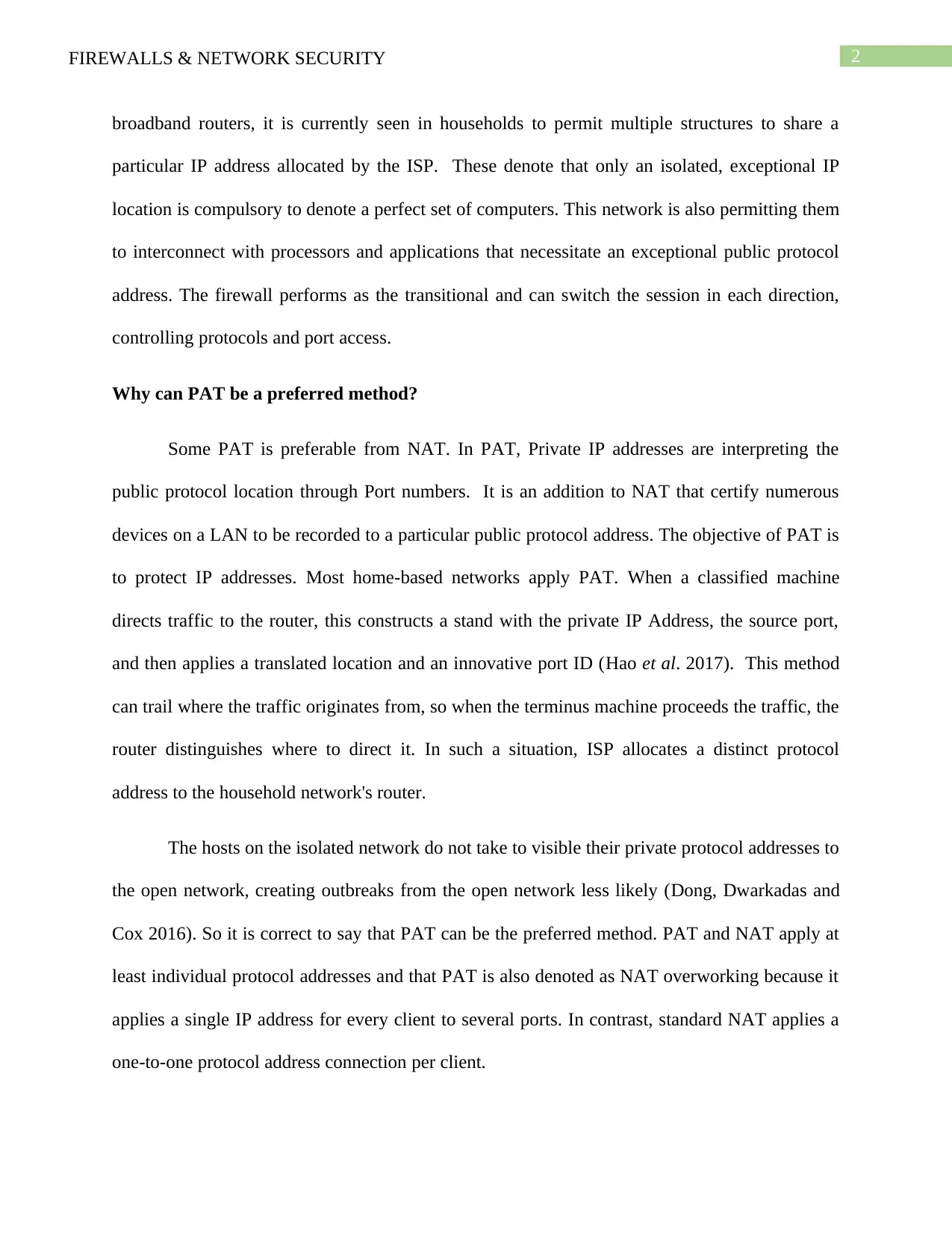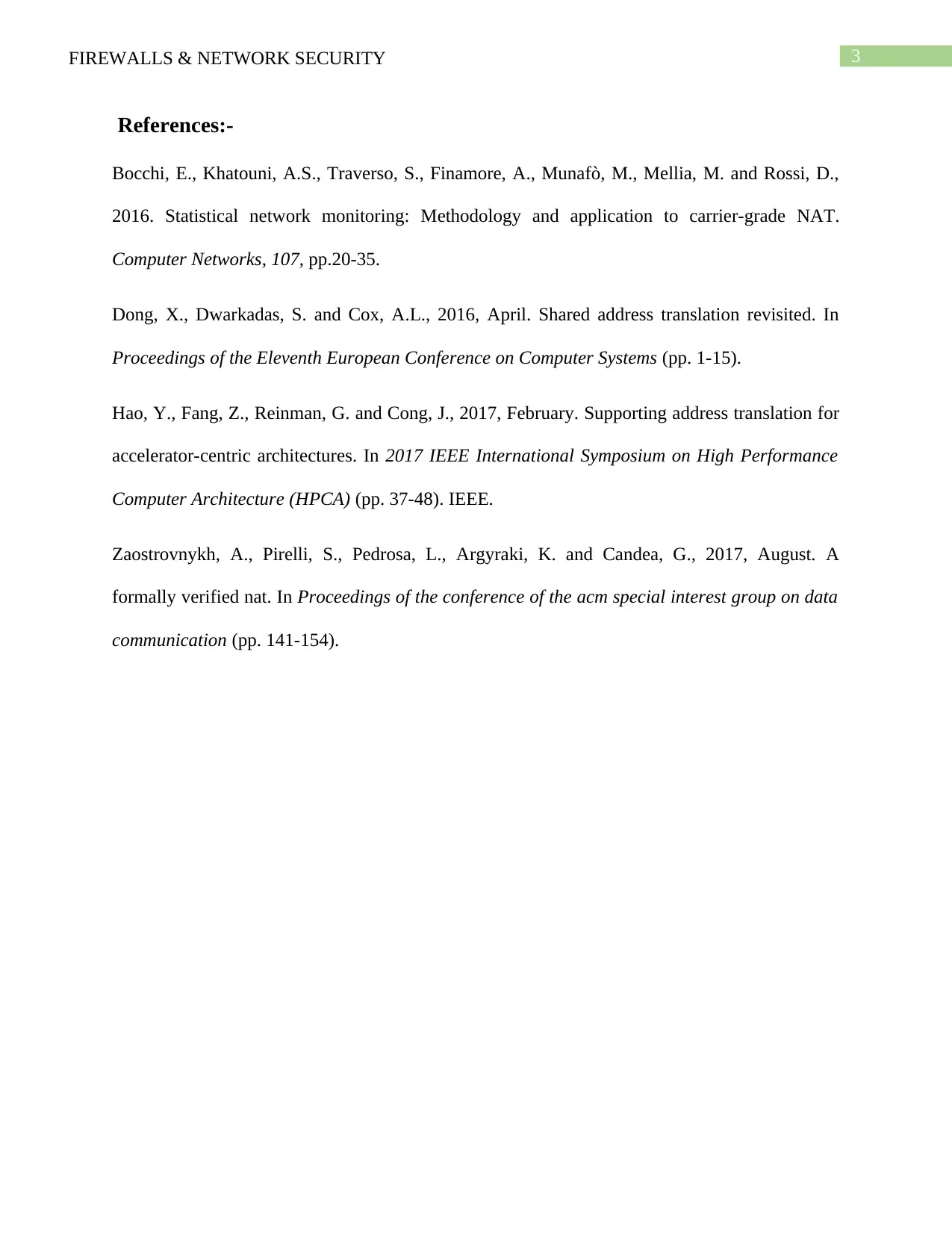Firewalls & Network Security Concepts: NAT, PAT, and Implementation
VerifiedAdded on 2022/08/25
|4
|821
|21
Homework Assignment
AI Summary
This assignment delves into the core concepts of network security, specifically focusing on Network Address Translation (NAT) and Port Address Translation (PAT). It explains the purpose of NAT, highlighting its role in allowing a Local Area Network (LAN) to use a single set of IP addresses for internal traffic and a separate one for external communication. The assignment describes how NAT protects the number of public addresses used within a business, enabling stricter access control. It further elaborates on the advantages of PAT, which translates private IP addresses using port numbers, enabling multiple devices on a LAN to share a single public IP address. The assignment also covers the preference of PAT over NAT in some scenarios, particularly in home-based networks, and discusses how these technologies work in conjunction with firewalls to control network access and enhance security. The assignment is supported by references to relevant research papers.
1 out of 4










![[object Object]](/_next/static/media/star-bottom.7253800d.svg)